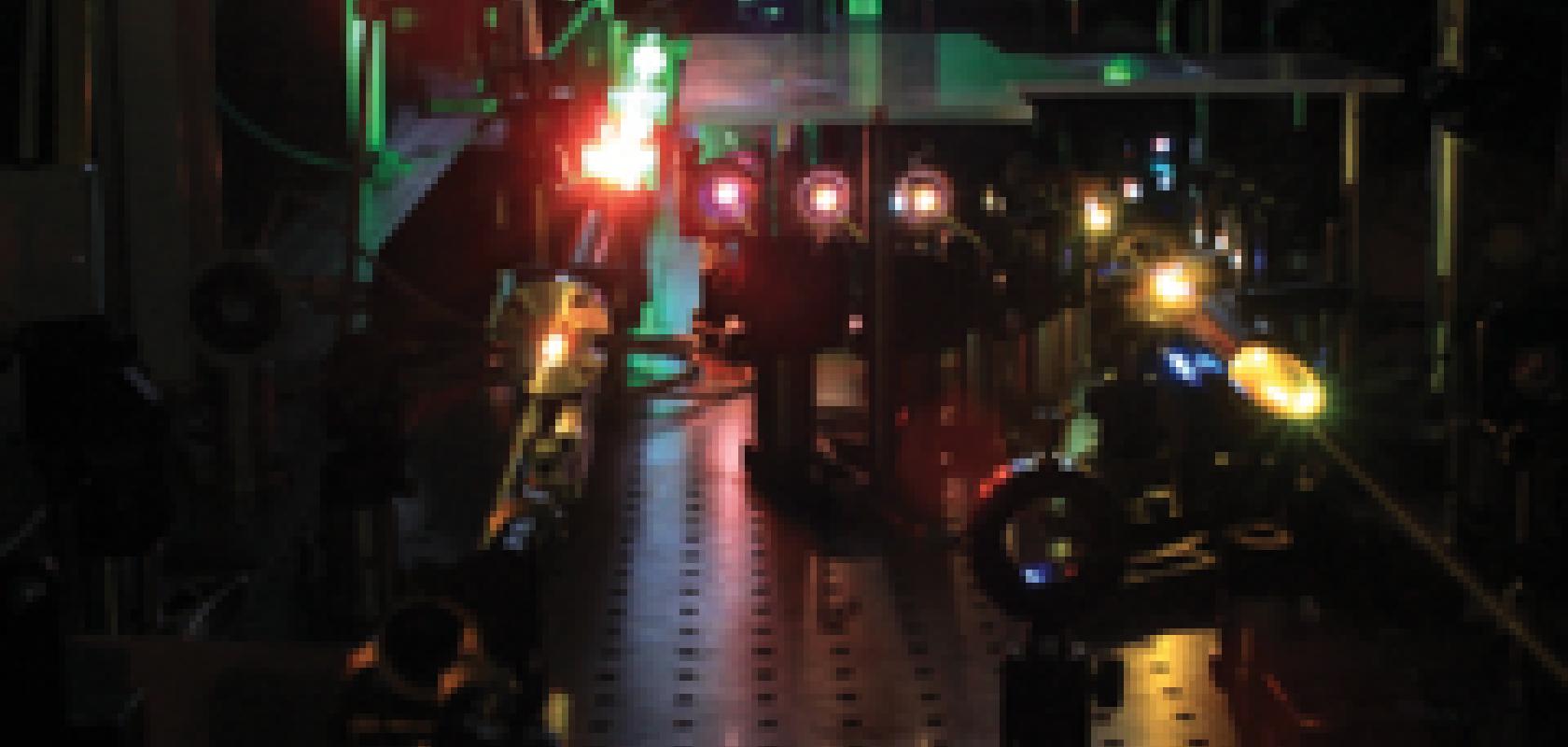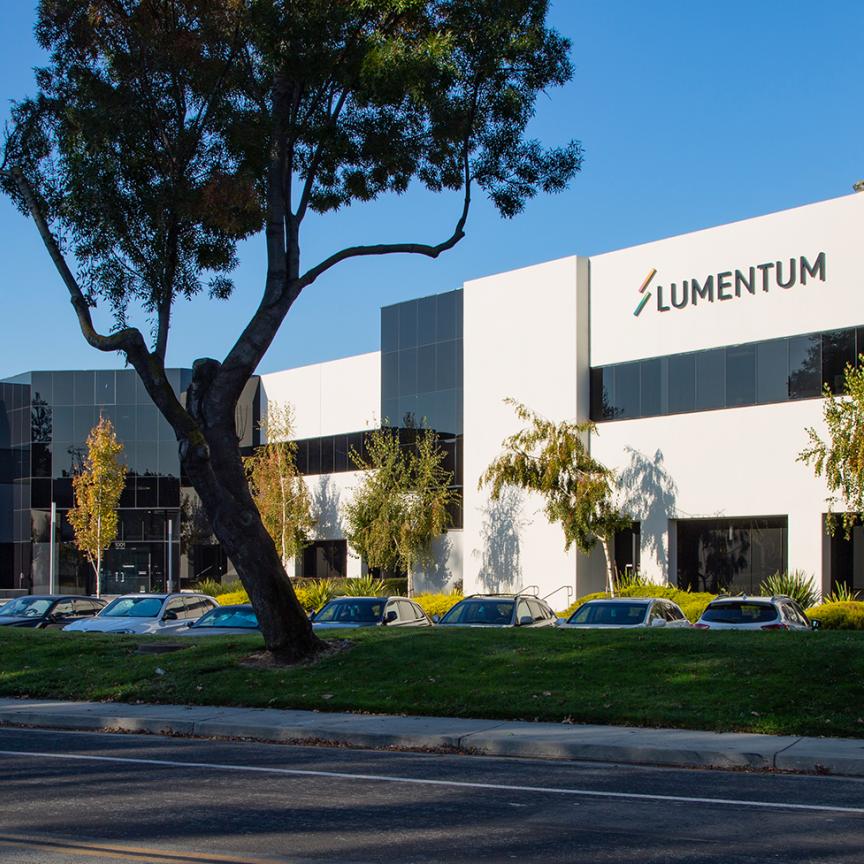While research into attosecond science remains highly specialised and limited to a relatively small number of laboratories, there is a growing amount of work underway on the subject. DARPA, the US defence research agency, launched an attosecond laser project in August and one of the planned laser facilities of the European Extreme Light Infrastructure (ELI) will be dedicated to attosecond science, once it is operational in 2015.
One reason to keep pushing the boundaries and making laser pulses shorter and shorter is the ambition to take snapshots of things that move extremely quickly. The laser is used like a sophisticated camera with a mind-bogglingly rapid flash. Over the years, optical pulsed lasers have bypassed micro and nanosecond pulse durations, moving into the realm of pico (10-12 seconds) and femtoseconds (10-15 seconds). Femtosecond-long pulses are able to freeze the moment when atoms and molecules form new compounds, making and breaking chemical bonds. Moving one step further, attosecond pulses (10-18 seconds) are fast enough to study the movement of electrons around atoms; they are a billion billionths of a second in duration, which is to a second what a second is to the age of the Universe.
Ultrafast laser systems available commercially are limited to the picosecond and femtosecond range. These pulses are generated by a technique known as mode locking, whereby the laser’s gain medium absorbs light like a sponge and then releases it in rapid bursts. This process occurs automatically in passive mode-locking, distinguishing it from active mode-locking. The type of automatic behaviour was initially called magic mode-locking, since it seemed to work by magic.
Currently, femtosecond optical lasers are common in eye surgery, microscopy, spectroscopy, and micromachining. Because the pulses are so incredibly brief, their effects become concentrated in time. This allows such a laser to perform a clear, precise ‘cold’ cut before the energy from the pulse can heat up the material around it. This is especially important for medical surgery, such as laser eye surgery for refractive correction, cataract treatment, and removing tumours.
One of the companies that manufacture optical systems for ultrafast lasers is Zygo Electro-Optics, based in Costa Mesa, California, USA. Besides surgery, its systems are used in industrial material processing applications such as surface annealing, according to the firm’s technical director Paul Townley-Smith. ‘Our optics are also employed in one of the most ambitious pulsed laser systems ever attempted, the National Ignition Facility,’ he commented.
A titanium-sapphire laser known as Hercules at the University of Michigan currently holds the world record for a focused femtosecond-long beam for intensity. Each pulse lasts 30fs, and the beam measures 20 billion trillion watts per square centimetre. It contains 300 terawatts of power – 300 times the capacity of the entire American electricity grid.
How nature shows femtosecond pulses are not the limit
But laser pulses lasting femtoseconds have not been the limit for researchers. Although femtosecond-long pulses have already lifted the microcosm’s curtain, certain processes in nature take place even faster. The dynamics of electrons in matter typically evolve on a sub-femtosecond timescale; for example, it takes about 150 attoseconds for an electron to circle the nucleus of an atom. A laser flash longer than that produces blurry images. The same goes for snapping electrons vibrating to the beat of light waves, and of proteins breaking down under x-ray bombardment.
In essence, to observe and measure electron dynamics in matter, ‘you need some kind of probe, [such as] a pulse of light on the same timescale or ideally shorter to time-resolve the motion,’ said John Tisch, a professor at Imperial College London in the UK working on attosecond physics.
To produce attosecond pulses, firstly 20-35fs pulses are generated with the help of a laser amplifier, usually titanium-sapphire. These bursts are focused to a high intensity into a cloud of noble gas atoms. Then, an optical system called a hollow-fibre pulse compressor reduces high-power (100GW) near-infrared femtosecond pulses to durations approaching less than 4fs. These pulses, which are among the shortest and highest-power pulses in the world, are then used to generate attosecond bursts of soft x-rays in the extreme ultraviolet (EUV) via a process known as high harmonic generation (HHG).
The wavelength of these pulses then gets filtered by a thin piece of metal foil, typically zirconium, which selects the portion of the radiation that corresponds to an isolated attosecond pulse. After filtering, the beam is either deflected into a spectrometer for analysis, or it can be focused onto a target using either a grazing incidence metal-coated mirror or a multilayer x-ray mirror, depending on the setup.
McPherson, based in Chelmsford, MA, USA, is one of the firms that develop the Off-plane X-ray Czerny-Turner (OP-XCT) spectrometer, for use at soft x-ray and extreme ultraviolet wavelengths. The instrument makes it possible to take spectral measurements at around 13nm wavelengths, and is used for such attosecond pulse applications as plasma physics, astrophysics, spectral testing and calibration. Another common spectrometer in the field, according to Tisch, uses a special type of variable line-spacing grating by Hitachi that allows the spectrum to be spatially-resolved.
This HHG process to generate attosecond pulses ‘is a field that’s only about a decade old, so it is still very much a frontier field in physics,’ said Tisch.
Enabling technologies for attosecond science
Tisch led the UK Attosecond Technology project, which brought together several UK universities studying attophysics. The project has produced enabling technologies for the field, such as a pulsed-valve, made to deliver gas plumes to laser interaction experiments at kilohertz repetition rates and with high backing pressures. The researchers also constructed a jitter-free EUV delay stage – a highly stable piezo-actuated two-part mirror that allows optical and EUV pulses to be precisely delayed with respect to each other. The tool is needed to measure the duration of attosecond EUV pulses. These tools allow attoseocond pulses to be generated and fully characterised routinely in Tisch’s lab.
Among the milestones in attosecond science include work carried out in 2008 by a team at Lund University, Sweden, which used an attosecond pulse to film, for the first time, an electron in motion. The movie showed an electron riding on a light wave, just after having been detached from an atom.
In September 2012, researchers in the US produced the shortest-ever laser pulses of just 67as long, beating the previous record of 80as set in 2008. The researchers, led by Zenghu Chang, a professor at the University of Central Florida, also developed a detector to capture them. In August 2013, the US Defense Advanced Research Projects Agency (DARPA) announced it would fund a $6.9 million project to investigate potential applications of attosecond pulses of light, and asked Chang’s team to lead the efforts.
The programme, named PULSE – Program in Ultrafast Laser Science and Engineering – will aim to use ultrafast lasers to create more accurate optical clocks, tabletop sources of x-rays emitting at 3-5nm wavelengths, and do more research on electron dynamics in materials. According to DARPA, attosecond pulse research could ultimately lead to applications in defence, for instance in communications and navigation.
In Europe, the Extreme Light Infrastructure (ELI) laser research facility is currently under consideration, and, if built, is deemed to become the world’s most powerful exawatt (1018 watt)-class laser. One of the aims of ELI is to build a user facility in Hungary, known as ELI-ALPS (Attosecond Light Pulse Source), to investigate laser-matter interactions using attosecond pulses, with parameters exceeding what is possible today.
Although the attosecond physics field is still rather young, there have already been a number of proof-of-principle applications. These include time-resolved inner-shell spectroscopy of atoms, direct measurement of light waves, tracking proton dynamics in small molecules, and timing the photoelectric effect. ‘Current effort is focused on developing techniques to use attosecond pulses to track the ultrafast absorption properties of matter, and finding ways of producing them more efficiently and at different wavelengths, for example, in the vacuum ultraviolet, which we are working on here at Imperial College, to open up a wider range of applications,’ said Tisch.
Challenges in building attosecond lasers
Despite their huge pulsed power, the pulse amplification lasers used for attosecond pulse research can be relatively compact, according to Tisch, easily fitting onto a standard laboratory optical table, making this science accessible to university-scale research groups. But these lasers are still state-of-the-art in terms of their output parameters, and there are only about 10 groups worldwide, including Imperial College London, that have the capability to generate and measure isolated attosecond pulses. This number looks likely to increase rapidly as the laser technology becomes more mature.
Producing attosecond pulses is far from cheap. A laser to produce femtosecond pulses could cost in the region of $500,000 to $1 million. But ‘apart from the laser, there is the rest of the chain, which may also cost as much as $1 million by the time it is ready to go for some fancy attosecond experiment,’ commented Marco Arrigoni, marketing director of Coherent, one of the companies that makes laser amplifiers for attosecond pulses.
And as pulses get shorter, it gets more and more challenging to produce the various components. Zygo Electro-Optics, for instance, which makes optical systems for femtosecond lasers, already faces numerous challenges during the design of optics. With every increase in power, ‘there is an increased risk of damaging the optical components that manage the beam’, said Townley-Smith.
Focusing the laser via the optics in air can also be a problem if the power level exceeds the level required to generate plasma, and in this case the focus must be eliminated through a design change or by placing the optics in a vacuum.
All these, and numerous other challenges, ‘simply intensify with shorter pulses and therefore higher powers’, said Townley-Smith. ‘This means ever smaller surface defect limits and finer control of processes. From an optics design perspective, as power increases, the allowable footprint of the beam on any given surface or within any bulk material will increase, which constrains design freedom.’
Why graphene is the next big thing in ultrafast lasers
One material that could help deal with some of the challenges, such as reducing the size of picosecond and femtosecond lasers from their traditional tabletop size to a shoebox or even pencil-like device while keeping the intensity, is graphene.
Several groups around the world are currently researching the lasing potential of this material, which has been hailed as one of the strongest, thinnest and most conductive materials ever found.
It turns out that graphene is also able to absorb light over a broad range of wavelengths. It means that ultrashort laser pulses from graphene can be of any colour, said Professor Andrea Ferrari of Cambridge University.
At the moment, only femtosecond-long pulses have been produced by graphene, but ‘recently it has been proposed that high order harmonic generation from a graphene sheet exposed to intense femtosecond laser pulses could [help] reach strong attosecond pulses’, said Byung Hee Hong, associate professor at Seoul National University in South Korea, adding that there will be experiments to verify this idea. The electrons in graphene can move independently by effectively screening Coulomb interactions, leading to the ultrafast response up to attosecond pulses.
Graphene aside, Tisch said that, by the nature of cutting-edge research, it is very difficult to predict the next big thing in attophysics. But, he adds, two strong contenders include the study and possible harnessing of nanoplasmonic effects, and the development of very high repetition-rate sources that produce attosecond pulses at orders of magnitude higher than currently possibly.
‘But, of course, it’s also possible that something new will come right out of the blue and shake the field up completely – it’s a very exciting field to be working in,’ he said.


